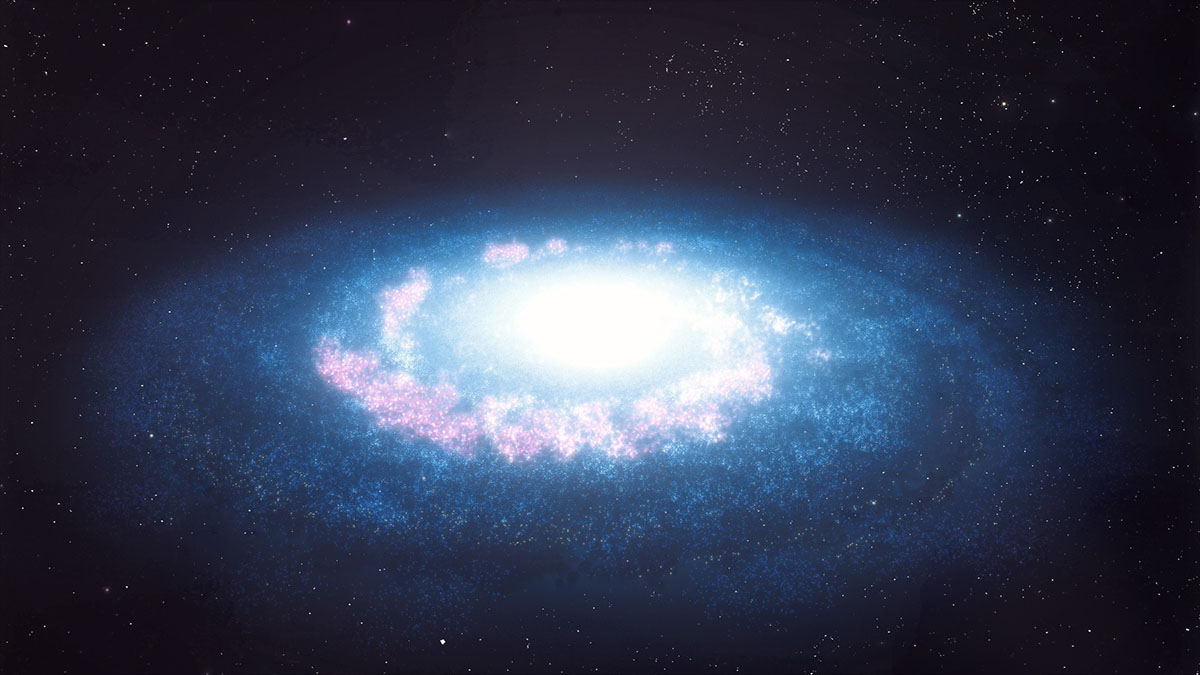roger penrose’s cyclical cosmology revisited

A little while ago, we looked at the cyclical cosmology resurrected by Roger Penrose and his colleague Vahe Gurzadyan, and discussed the major problems it left unaddressed. Now, physicists have tried to replicate a cosmic map with wispy concentric circles of radiation and took to arXiv with their rebuttals. Yes, they could find the circles at the core of Penrose’s paper, but when they account for the regions of space around them, these perturbations are really not that spectacular and fall neatly into the CMBR models we have as random noises from the early universe. And really, while the graphics with the paper and in news releases highlight circles in the splotches of temperature data, if you take a closer look, you’ll see that without their helpful shading, they’re not exactly easy to pick out and quickly get lost in the background. So just like most patterns teased out with a complex technique, their significance can be in the eye of the beholder, and considering that what defines any of these circles is a variation of a tiny fraction of a degree, they seem like shaky proof for past Big Bangs.
According to Penrose’s rebuttal to the rebuttals, it’s all about how you measure and model the CMBR. Instead of simply seeing how well these circular patterns fare in the noise of the background radiation, he decided to homogenize the background noise to the point at which the concentric belts of cooler temperatures stood out more. It seems a bit disingenuous since he’s basically trying to amplify some parts of the noise until he gets some sort of signal, while the other teams are trying to find the signal in the noise and measure how much it stands out. This is something every graduate advisor warns you not to do when running an experiment. Want to prove something? Don’t massage the data until you get what you want, just look for it where you expect it to be and if you don’t see it, try to figure out why you don’t and where else to look. It seems that Penrose may well have neglected this basic advice since in his response on arXiv, he emphasizes how his method of analysis really brings out entire families those concentric belts in the CMBR out at a greater statistical significance, as well as how he believes his critics have a problem with understanding his proposition.
But the funny thing is that his critics understand his proposition just fine, which is in part why they don’t see a need to really hunt down concentric circles in the CMBR. As pointed out in the previous post on this, Penrose provides no working definition of what would cause a second Big Bang and simply notes that after eons pass and this universe cools down and goes dark and silent, entropy slows down to a crawl just like it was at a low point during the birth of the cosmos as we know it. Therefore, he continues, we can simply correlate it with an early universe and say that there’s a cycle of Big Bangs happening on vast time scales, with a concentric belt of cooler temperatures marking the event. That’s really not enough of an explanation to put it mildly because it implies that you get a massive bubble of time and space, and an ejection of quark-gluon plasma big enough to fill an entire universe with multiple forms of matter five times over whenever entropy gets low. That’s akin to saying that when your coffee gets cold, it just heats itself up again. Without a trigger that explains how we can go from very little entropy to an explosion of space, time, and matter at Planck density, and without a model to measure variations in the CMB to tease out a few concentric circles by over-homogenizing their surroundings, the idea of a cyclical cosmos as defined by Penrose and Gurzadyan just won’t work.
Gurzadyan, V., Penrose, R. (2010). More on the low variance circles in CMB sky arXiv: 1012.1486v1
Moss, A., et al. (2010). No evidence for anomalously low variance circles on the sky arXiv: 1012.1305v1





